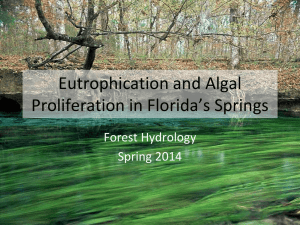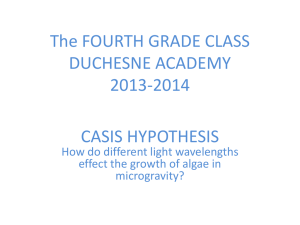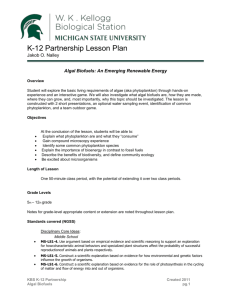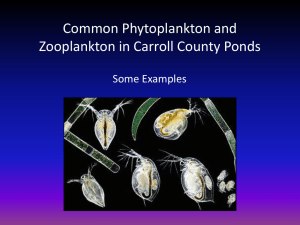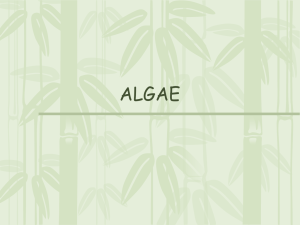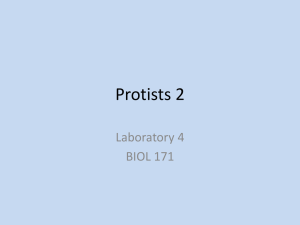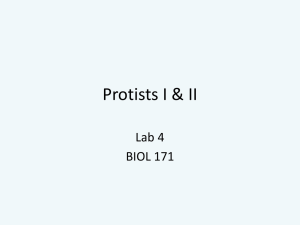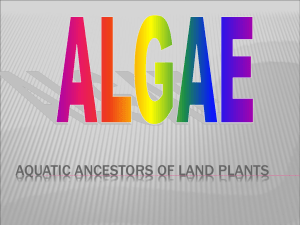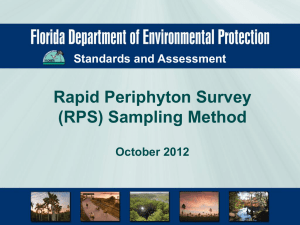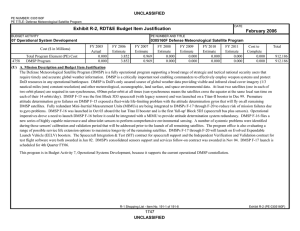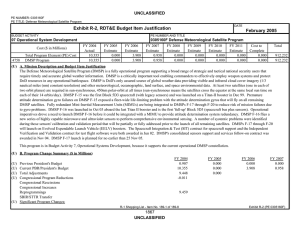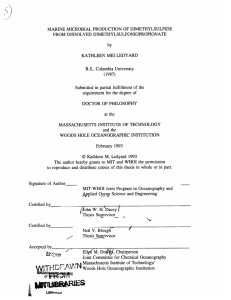Document
advertisement
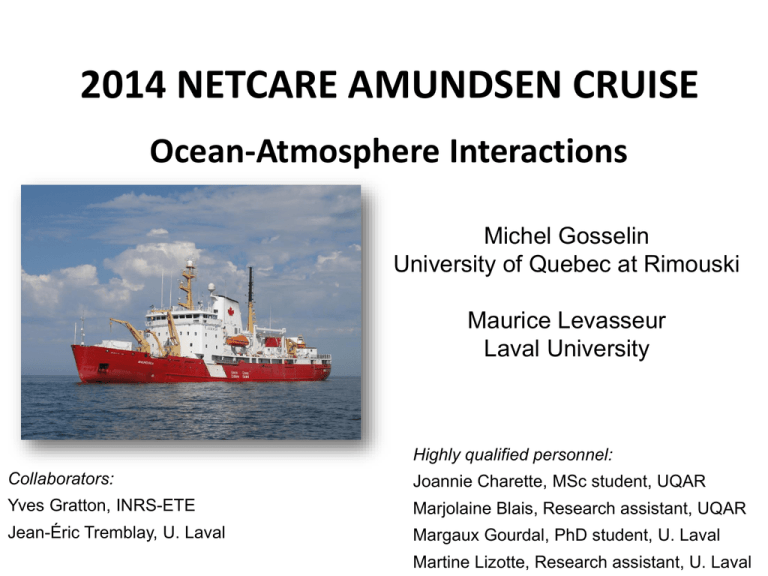
2014 NETCARE AMUNDSEN CRUISE Ocean-Atmosphere Interactions Michel Gosselin University of Quebec at Rimouski Maurice Levasseur Laval University Highly qualified personnel: Collaborators: Joannie Charette, MSc student, UQAR Yves Gratton, INRS-ETE Marjolaine Blais, Research assistant, UQAR Jean-Éric Tremblay, U. Laval Margaux Gourdal, PhD student, U. Laval Martine Lizotte, Research assistant, U. Laval Main research question What are the sources of DMS at the ice edge in spring and summer and what is controlling the strength of these sources? Simplified Arctic ice-edge ecosystem Light Melt pond algae Algal aggregates Bottom ice algae Sub-ice algae Under-ice phytoplankton Phytoplankton Mixed Layer Depth Simplified Arctic ice-edge ecosystem Light DMSair DOM Algae (DMSP) DMSaq Bacteria Recycling MLD Simplified Arctic ice-edge ecosystem Light DMSair DOM Algae (DMSP) DMSaq Bacteria Sinking MLD Nutrients Who are the key players in DMS production? • • • • • Open water phytoplankton and bacteria Ice-edge phytoplankton and bacteria Under-ice phytoplankton and bacteria Melt pond algae and bacteria Marine aggregates at the sea surface (e.g. the centric diatom Melosira sp.) Specific questions concerning the algal community • • • • • Who are they? To which algal group they belong? How much are they? What are their abundance and biomass? Are they active? What are their production rates? Are they light or nutrient stressed? What are their residence times in the surface mixed layer? WATER SAMPLING • Water column sampling with 24 12-L Niskin-type water bottles attached to a CTD-rosette system • Melt pond sampling with a slurp-gun (large syringe of 4 L) and a 12 V electric pump (Cyclone) SEA ICE SAMPLING • • • • • • • Snow depth Ice thickness Depth of melt ponds Extent of melt ponds Light transmission Temperature Salinity MEASUREMENTS Light • Incident photosynthetically active radiation (PAR, 400-700 nm, LI-COR sensor) MEASUREMENTS Light • Incident photosynthetically active radiation (PAR, 400-700 nm, LI-COR sensor) Vertical structure of the water column (Sea-Bird CTD with additional sensors) (Yves Gratton’s team) • • • • • • • Water temperature Salinity PAR Transmissivity (proxy of particle number) Oxygen Nitrate (Satlantic sensor) In vivo fluorescence (proxy of algal biomass) MEASUREMENTS Light • Incident photosynthetically active radiation (PAR, 400-700 nm, LI-COR sensor) Vertical structure of the water column (Sea-Bird CTD with additional sensors) (Yves Gratton’s team) • • • • • • • Water temperature Salinity PAR Transmissivity (proxy of particle number) Oxygen Nitrate (Satlantic sensor) In vivo fluorescence (proxy of algal biomass) Nutrients (Bran-Luebbe 3 autoanalyzer) (Jean-Éric Tremblay’s team) • • • • • Nitrate plus nitrite Nitrite Phosphate Silicic acid Ammonium (Fluorometric method) MEASUREMENTS DMS dynamics (Maurice Levasseur’s team) • • • Particulate DMSP and DMSO (Gas chromatography) Dissolved DMSP, DMS (Gas chromatography) Microbial DMSP uptake and metabolism (35S-DMSP method) MEASUREMENTS DMS dynamics (Maurice Levasseur’s team) • • • Particulate DMSP and DMSO (Gas chromatography) Dissolved DMSP, DMS (Gas chromatography) Microbial DMSP uptake and metabolism (35S-DMSP method) Biology (Michel Gosselin’s team) • • Chlorophyll a (3 size fractions: 0.7-5 µm; 5-20 µm; > 20 µm) (Fluorometric method) Cell abundance – – – – • • • • • Bacteria (Flow cytometry) Picoalgae (0.2-2 µm) (Flow cytometry) Nanoalgae (2-20 µm) (Flow cytometry) Microalgae (> 20 µm) (Light microscopy) Identification of cells > 2 µm (Light microscopy) Identification of cells < 2 µm (HPLC pigment signature) Particulate algal production rate (2 size fractions: 0.7-5 µm; > 5µm: 14C-assimilation method) Release rate of dissolved organic carbon (DOC) by algae (14C-assimilation method) Potential export rate of algae (Model of Tremblay & Legendre (1994) based on the production of large cells) MEASUREMENTS Organic material (Michel Gosselin’s team) • Total particulate carbon (TOC) (CHN analyzer) – Particulate organic carbon (POC) – Particulate inorganic carbon (PIC) • Particulate organic nitrogen (PON) (CHN analyzer) • Total dissolved carbon (TOC) (Shimadzu TOC-VCPN analyzer) • Dissolved organic carbon (DOC) (Shimadzu TOC-VCPN analyzer) • Total dissolved nitrogen (TDN) (Shimadzu TOC-VCPN analyzer) • Transparent exopolymer particles (TEP) (Alcian blue method?; Oliver Wulf) These data will permit us to determine the vertical and horizontal gradients of environmental and biological variables across the ice-edge zone See you onboard! Specific objective • To identify processes favoring DMS production at the ice edge zone. • Specific research questions • What are the abundance, biomass and production rate of the algae at the ice edge zone? • What are the environmental conditions favoring the growth and accumulation of DMSP containing algae? • What is the role of light, nutrient flux and water column stratification/mixing on the DMSP containing algae?


